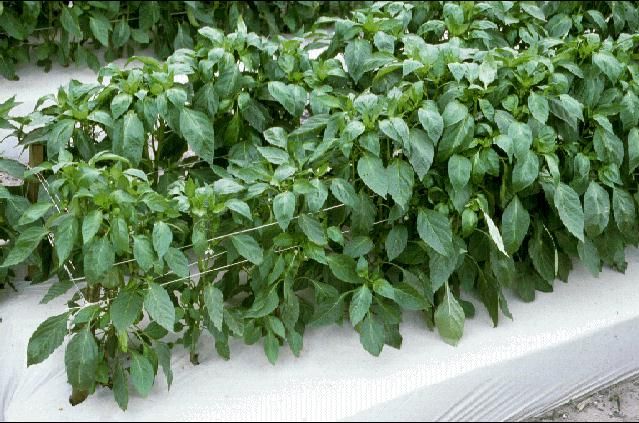Paprika—Capsicum annuum L.1
Paprika is a type of mild pepper that is dried, ground, and used as a spice. Most of the paprika peppers grown in the United States have been introduced from southern Europe. In areas where grown, selections have been made for color, shape, and thickness of pods, and flavor of the ground product. Some of the local selections have become fairly well established as to type, but none as varieties. Processors have developed varieties for dehydration, but these are not available for public planting.

Credit: James M. Stephens, UF/IFAS
The so-called Hungarian paprika is grown more widely in the United States than any other. Spanish paprika is also grown but to a lesser extent.
Description
Hungarian paprika produces fruits that are 2–5 inches long, depending on the strain. The shape varies from conical (pointed) to oblong (tapering), and walls are usually thin. Some strains are more pungent (hot) than others, but most are mild. There appears to be great variability in the strains of paprika coming directly from Hungary. Some are much smaller and rounder than the United States selections already described.
Spanish paprika has larger, longer fruits, usually 5–9 inches long, with thick walls, and the ground powder has good flavor. Due to the larger, thicker, and more fleshy pods of the Spanish paprika, it is also more susceptible to disease in the field than the smaller Hungarian paprika.
Culture
In Florida, very little paprika is grown, although like other peppers it appears to be well adapted here and to other pepper-growing areas of the South. Years ago it was grown commercially in South Carolina and Louisiana.
Paprika is started from seed, early in the spring as soon as frost danger has passed. Plants are spaced 12 inches apart in rows 3 feet apart. Fruits of varying degrees of maturity are found on the plant in summer and fall because flowers are produced over a long period. Fruits are picked when fully mature, as indicated by the bright red color.
Use
Drying and curing of the peppers require clear, hot weather or artificial heat in a suitable structure. Home gardeners can dry them by placing mature peppers in mesh bags and hanging the bags in the attic, a heated room, or structure providing 130°F–150°F for 3 days to 1 week. About 85% of the pod weight is lost in drying.


